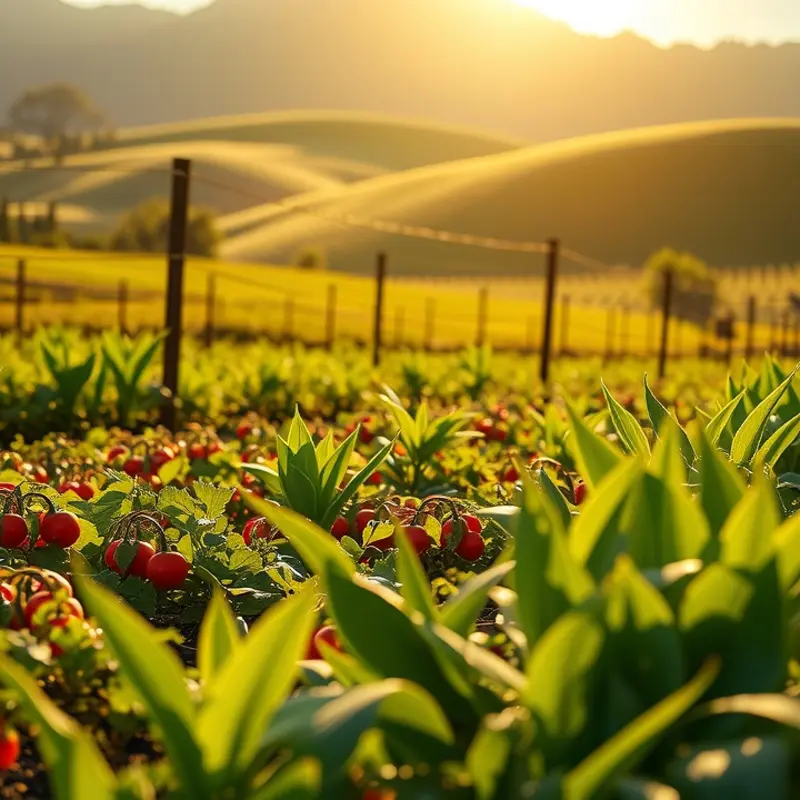Squash offers a diverse range of flavors, textures, and colors that can elevate any meal. With its versatility, squash can fit seamlessly into various diets, making it a favorite among home cooks and health-conscious individuals alike. From summer zucchinis to autumnal butternuts, understanding the different varieties will enhance your cooking experience and empower you to make simple yet effective ingredient substitutions. Let’s explore some of the best squash varieties and practical cooking solutions.
Decoding Squash Varieties

Squash, a staple in many kitchens, comes in a delightful array of varieties, each with distinct characteristics and culinary applications. Understanding these can elevate your cooking, allowing you to choose the ideal squash for any dish.
Let’s start with zucchini, a summer squash prized for its delicate flavor and versatility. This squash has a tender flesh that soaks up the flavors of accompanying ingredients effortlessly. It’s best enjoyed when sautéed, grilled, or even raw in salads. Zucchini’s peak season is late spring through summer, making it a go-to for light, refreshing dishes.
Butternut squash, a winter variety, presents a natural sweetness and creamy texture that lends itself well to purees and soups. Its vibrant orange flesh becomes rich and buttery when roasted, ideal for adding depth to stews or simply mashed with spices. Butternut squash is available year-round but reaches its best quality from early fall through winter.
Moving on, acorn squash is another winter favorite known for its mildly sweet flavor and nutty notes. Its ribbed skin makes it visually distinct, and its flesh holds up well under various cooking methods. Baking and roasting bring out its sweetness, and it pairs beautifully with brown sugar and butter. Typically harvested in late summer, acorn squash stores well for months, providing a robust flavor long after the growing season.
Lastly, spaghetti squash offers a unique texture resembling strands of pasta when cooked. This variety stands out as an excellent low-carbohydrate alternative for pasta lovers. Once baked or microwaved, its flesh can be forked into spaghetti-like strands, perfect for pairing with your favorite sauces. It is often harvested in early fall and, like acorn squash, can be stored for several months.
To maximize the flavors of these versatile vegetables, keep in mind their storage needs. Proper storage not only extends their shelf life but also enhances their taste in your dishes. For tips on eco-smart kitchen storage, visit Eco-Smart Kitchen Storage.
Understanding these squash varieties and their ideal cooking methods can transform how you incorporate them into your meals. Each type offers a unique flavor profile, be it the summery lightness of zucchini or the rich sweetness of butternut squash. By selecting the right variety, you can craft dishes that highlight their natural qualities and delight any palate.
Smart Substitutions and Cooking Techniques

Learning to substitute different squash types effectively can elevate your cooking while adapting to availability and preference. Whether you’re dealing with winter squash like butternut and acorn or summer squash such as zucchini and yellow squash, some basic rules can guide you.
When substituting squash, focus on flavor and texture. Butternut squash, with its sweet, nutty taste, can replace pumpkin in most recipes without major adjustments. Acorn squash’s milder profile is great for swapping with delicata in roasting dishes. For those dishes demanding the firm texture of spaghetti squash, both zucchini and yellow squash can imitate the noodle-like consistency if spiralized or julienned.
Size matters when swapping squash varieties. Smaller squashes like pattypan can replace zucchini in stir-fries for a similar bite but keep your eyes on cooking times; smaller squash will cook faster. These substitutions are a gateway to flexibility, allowing cooks to maximize seasonal produce or what’s left in their pantry.
Roasting enhances the inherent sweetness of squash. Preheat your oven to 400°F (200°C) and toss your squash in olive oil, salt, and pepper. A sprinkle of spices like cinnamon or smoked paprika can amplify its natural allure. Experiment by roasting your squash with whole garlic cloves or fresh herbs for added depth.
Baking can be approached with creativity. For instance, transform acorn squash into a dessert by hollowing it out, filling with brown sugar, butter, and spices, and baking until tender. Butternut squash can be pureed and integrated into desserts like pies or cakes, offering both moisture and subtle sweetness.
Sautéing offers a quick method to cook squash with simplicity and flavor. Sliced zucchini or summer squash sautéed with garlic and a splash of lemon juice can be a quick side dish. Adding toasted breadcrumbs and parmesan can give it a rustic appeal.
Squash is versatile in its capacity to be raw or cooked in salads. Thin ribbons of zucchini tossed with lemon vinaigrette and fresh mint offer a refreshing summer dish. For heartier salads, roasted butternut cubes mixed with quinoa and arugula balance textures and flavors elegantly.
For soups, consider the density and water content of the squash variety. Chunkier varieties like kabocha squash create creamy textures when pureed with either vegetable or chicken stock. For a spicier spin, add curry powder or cumin to the mix.
Using squash in main dishes, consider ideas inspired by global cuisines. Stuff hollow acorn squash halves with spiced meat or lentils for a Middle Eastern flair. Or incorporate shredded zucchini into lasagna as a noodle replacement for a low-carb alternative.
Waste reduction tips can also enhance your cooking efficiency. Save squash seeds for roasting as a healthy snack, similar to pumpkin seeds, providing a beneficial way to utilize the whole vegetable. For more on minimizing kitchen waste and maximizing ingredients, explore low-waste cooking prep.
Through substitution, versatile cooking methods, and creative incorporation, squash becomes an adaptable ally in the kitchen. It encourages culinary inventiveness, providing ample opportunities to experiment and enjoy.
Final words
Squash is not only versatile but also a delicious and nutritious choice for a multitude of dishes. With an understanding of the different varieties, their flavor profiles, and how to utilize them in your cooking, you can enhance your meals and cater to different dietary preferences. Use this guide to experiment with various squash types, from the delicate zucchini to the hearty butternut, and embrace creative cooking methods. Remember, the key to successful squash cooking lies in using the right squash for each dish and adapting cooking techniques to bring out their best flavors. Your culinary adventure with squash starts here!







